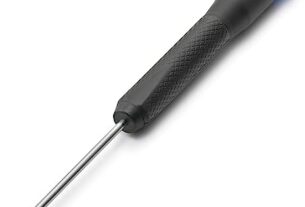Descaling tools are essential for maintaining the efficiency and longevity of your household appliances. If you’re tired of dealing with mineral buildup in your coffee maker, kettle, or showerhead, a descaling tool can make all the difference. But with so many options available on the market, how do you know which one to choose? In this article, we’ll guide you through everything you need to know about descaling tools and help you find the perfect one for your needs.
What is a Descaling Tool?
A descaling tool is designed to remove mineral buildup from appliances that come into contact with hard water. Hard water contains high levels of minerals like calcium and magnesium, which can accumulate over time and cause clogs, reduce efficiency, and even damage appliances. A descaling tool uses a special solution or abrasive material to dissolve or scrub away these mineral deposits, leaving your appliances clean and functioning properly.
Why Do You Need a Descaling Tool?
If you live in an area with hard water, chances are you’ve experienced the frustration of dealing with mineral buildup in your appliances. Over time, this buildup can cause serious damage to your appliances and reduce their lifespan. For example, mineral buildup in a coffee maker can clog the brewing system and affect the taste of your coffee. In a showerhead, it can reduce water pressure and create unsightly discoloration. A descaling tool is a simple yet effective way to prevent these issues and keep your appliances running smoothly.
Types of Descaling Tools
There are several types of descaling tools available on the market, each with its own advantages and disadvantages. Here’s an overview of some of the most common types:
1. Solution-based: Solution-based descalers come in liquid form and are typically used for larger appliances like dishwashers or washing machines. They work by dissolving mineral buildup, making it easy to rinse away.
2. Powder-based: Powder-based descalers come in a dry powder form and are usually mixed with water to create a solution. They’re often used for smaller appliances like coffee makers or kettles and can be more abrasive than liquid solutions.
3. Acid-based: Acid-based descalers use chemicals like citric acid or vinegar to dissolve mineral buildup. While these solutions can be effective, they can also be harsh and potentially damaging if not used correctly.
4. Mechanical: Mechanical descaling tools use abrasive materials like steel wool or sandpaper to scrub away mineral deposits. These tools can be effective but require more effort than solution-based descalers.
How to Choose the Right Descaling Tool
When choosing a descaling tool, there are several factors to consider:
1. Type of appliance: Different types of appliances may require different types of descalers. For example, a coffee maker may require a gentler solution than a dishwasher.
2. Size of appliance: Consider the size of the appliance you need to clean and choose a descaling tool that’s appropriate for its size.
3. Frequency of use: If you use an appliance frequently, you may need to descale it more often. Look for a descaling tool that’s easy to use and won’t damage your appliance with frequent use.
4. Chemical sensitivity: If you’re sensitive to chemicals or prefer natural solutions, look for a descaler that’s free from harsh chemicals like acids.
5. Price: Descale tools vary in price, so consider your budget before making a purchase.
Tips for Using a Descaling Tool
Once you’ve chosen the right descaling tool for your needs, here are some tips for using it effectively:
1. Read the instructions carefully: Make sure you understand how to use the product before getting started.
2. Follow safety precautions: Wear gloves and eye protection if necessary, and work in a well-ventilated area.
3. Use the right amount: Follow the instructions for how much solution or powder to use based on the size of your appliance.
4. Let it sit: Allow the descaling solution to sit for the recommended amount of time before rinsing it away.
5. Rinse thoroughly: Make sure to rinse your appliance thoroughly after descaling to remove any remaining residue.
6. Repeat as needed: Depending on the severity of mineral buildup, you may need to repeat the process multiple times.
Conclusion
A descaling tool is an essential tool for maintaining the efficiency and longevity of your household appliances. Whether you choose a liquid solution, powder-based descaler, acid-based cleaner, or mechanical tool, make sure to choose one that’s appropriate for your appliance and follow safety precautions when using it. With regular use, a descaling tool can help prevent mineral buildup and keep your appliances running smoothly for years to come.
References:
https://en.wikipedia.org/wiki/Descaling
https://www.coffeeble.com/best-descaling-solution-for-coffee-makers/
https://www.homestratosphere.com/descaling-tools/




